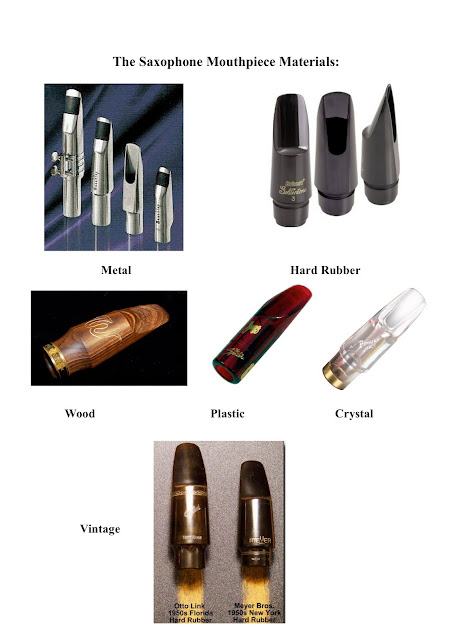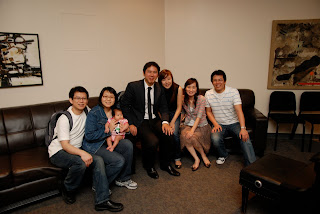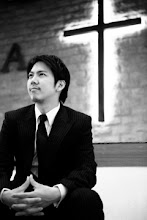這是2010年11月我在UNT的第2場音樂會的演出現場(片段節錄), 關於此次演出曲目與作曲家的一些介紹, 大家不妨參考之前的一篇文章:
威廉的北德大第二場個人演奏會---曲目介紹
因為這場音樂會是在生病中開完的, 因此在表現跟穩定度上, 威廉都不能說是很滿意,
可是還是感謝主, 讓音樂會能順利落幕~
雖然威廉的這次演出表現有限, 不過還是希望能讓大家對於這些平時在台灣比較少接觸到的古典薩克斯風音樂, 有更進一步的了解與認識~
因此有些猶豫之後, 還是要與大家分享這次的演出影片,
也歡迎大家提供給我建議與想法, 讓威廉在未來還有更多進步的空間喔~ 謝謝大家~
Caravan for two Alto Saxophone (2007) Tanya Anisimova (1966)
Kyle Hutchins, alto saxophone
Sonata in E-flat Op.120, No.2 (1984) Johannes Brahms (1833-1897) arr. William Chien
I-Hsin (Kate) Kang, Piano
Concerto for Saxophone Quartet (1995)
Philip Glass (1937)
Xenix Saxophone Quartet
Soprano Saxophone: Andrew Martz
Alto Saxophone: William Chien
Tenor Saxophone: Kyle Hutchins
Baritone Saxophone: Jason Pockrus
They Might Be Gods (2009)
John Leszczynski (1987)
Xenix Saxophone Quartet

當然, 除了音樂會的協演人員(二重奏與四重奏的同學們~)之外, 威廉還要感謝許多人, 沒有他們, 就沒有這場音樂會的誕生~
首先, 要謝謝我的老師Dr. Nestler, 他這學期給我的指導與幫助~
即使有時候, 我會在音樂上有與他不同的看法, 但是他還是願意不厭其煩的與我分享他的音樂想法與詮釋~Thank you, Dr. Nestler!
再來, 是這次音樂會跟採排這兩次的攝影師---Ludovic, 他真的是一位非常有耐心且技術一流的攝影師喔~ 有他照相, 真的是讓人很放心呢~ ^^

此外, 我也要特別感謝音樂會的動態攝影師Willy(上面的影片就是從他的錄影終節錄出來的, 感謝Willy大師阿~ ^^)
還有兩位幫忙整場音樂會的好朋友~ Kevin跟Tyler, 沒有他們的前後奔波, 音樂會沒辦法這麼順利進行的~

還有還有, 要特別感謝老婆的好朋友嘉珍, 每次都擔當我們的救援Page Turner, 讓我跟以昕都能夠非常安心的演奏, 真的是要完全歸功於她呢~
再來, 要大力感謝音樂會的Reception的幕後功臣~
請大家看看這麼豐富的餐點吧~ 從蛋塔到蝦餃, 在從酸梅湯到各式點心, 真的是超級豐富的, 想必大家一定很想認識這位預備Reception的高手吧~
讓大家看看他的真面目吧~
沒錯就是彈鋼琴的這位美女....JoJo........的媽媽跟把拔---Peggy(右一)跟Dixon(左一), 還有幫了超級多忙, 擁有一雙巧手的Jessica (右二, 不是被抱的那位...)
他們為了這個reception, 不但音樂會沒辦法參與, 還要花許多時間來準備, 真的是很不好意思~ 可是也真的很感謝他們的愛心~
還有還有, 威廉也要感謝每一位來到音樂會現場, 以及沒辦法來到, 卻為我禱告與送上祝福的每一位弟兄姊妹與好朋友們~ 謝謝你們, 給了我表演的勇氣與信心~

最後, 我要謝謝天父, 給了我一位最好的妻子以昕(Kate), 同時也是最好的音樂夥伴, 她給我的支持與鼓勵, 是我在德州留學最大的力量~ (老婆: I LOVE U~ ^^)
沒有她, 我沒辦法堅持下去在這裡的學習~ 當然, 這一切愛的力量, 都是從最愛我們的主耶穌而來, 在此僅將這場音樂會的成功與掌聲, 獻給天上的父神~
再次謝謝大家與我一同回顧這次的演出! 我會再繼續努力, 好好練習, 期待能在不久的未來, 與大家分享更好的音樂!!!

































